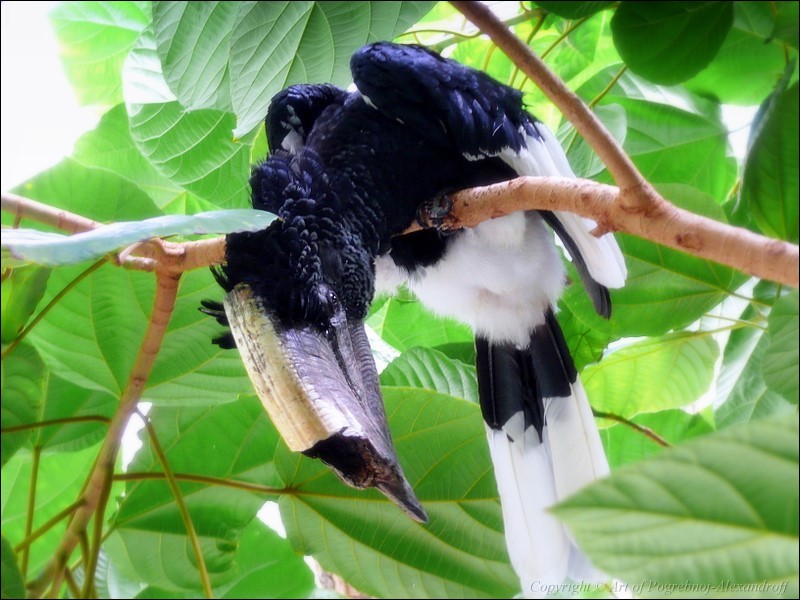Black-and-white-casqued Hornbill (Bycanistes subcylindricus) - Wiki Black-and-white-casqued Hornbill
From Wikipedia, the free encyclopedia
Order: Coraciiformes
Family: Bucerotidae
Synonyms: Ceratogymna subcylindricus
[Photo] This is the Black-and-white-casqued Hornbill (Ceratogymna subcylindricus) or (Bycanistes subcylindricus) also known as Grey-cheeked Hornbill is a large, up to 70cm long, black and white hornbill. Date 2007. Author Pogrebnoj-Alexandroff (http://commons.wikimedia.org/wiki/User:Pogrebnoj-Alexandroff).
Copyright (C) 2007 Pogrebnoj Alexandroff
Permission is granted to copy, distribute and/or modify this document under the terms of the GNU Free Documentation License, Version 1.2 or any later version published by the Free Software Foundation; with no Invariant Sections, no Front-Cover Texts, and no Back-Cover Texts. A copy of the license is included in the section entitled "GNU Free Documentation License". |
The
Black-and-white-casqued Hornbill,
Bycanistes subcylindricus also known as
Grey-cheeked Hornbill is a large, up to 70cm long, black and white hornbill. It has an over-sized blackish bill with large casque on top. The female is slightly smaller than the male.
The
Black-and-white-casqued Hornbill is distributed to evergreen forests and savanna across equatorial Africa, in central and western Africa. A monogamous species, pairs nest in suitable tree cavities. The female usually lays up to two eggs. The diet consists mainly of figs, fruits, insects and small animals found in the trees.
Widespread and still common throughout its large habitat range, the
Black-and-white-casqued Hornbill is evaluated as Least Concern on the IUCN Red List of Threatened Species.
http://en.wikipedia.org/wiki/Black-and-white-casqued_Hornbill| The text in this page is based on the copyrighted Wikipedia article shown in above URL. It is used under the GNU Free Documentation License. You may redistribute it, verbatim or modified, providing that you comply with the terms of the GFDL. |
